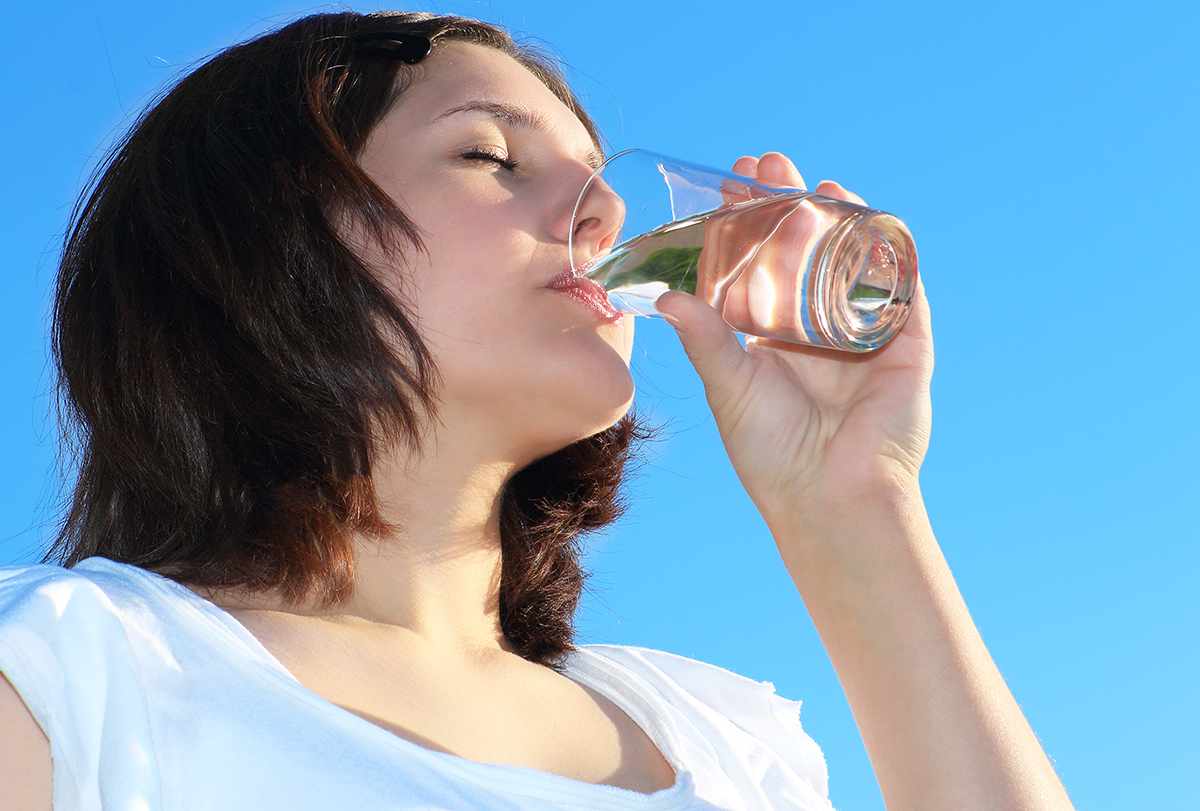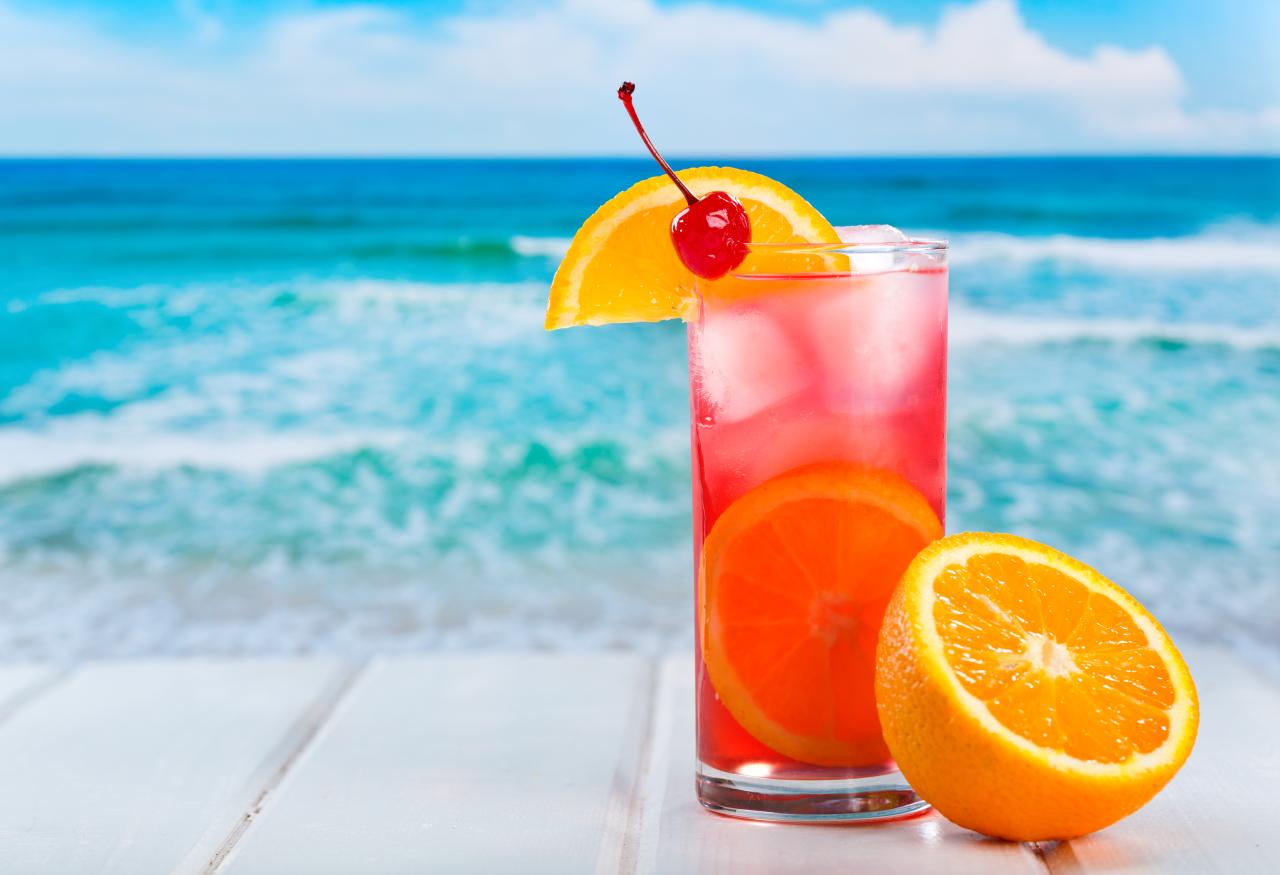Learning how to drink more water daily is essential for maintaining optimal health and well-being. Proper hydration supports vital bodily functions, enhances energy levels, and promotes clearer skin, making it a fundamental aspect of a healthy lifestyle. Understanding effective strategies to increase water intake can transform your daily routine and lead to lasting health benefits.
In this guide, we explore practical methods to incorporate more water into your daily schedule, identify and overcome common barriers, and tailor hydration strategies for different age groups and activity levels. With simple tips and tracking techniques, you can develop sustainable habits that ensure you stay well-hydrated every day.
Understanding the importance of drinking more water daily

Maintaining optimal hydration is fundamental to supporting overall health and well-being. Water accounts for a significant portion of the human body, influencing numerous physiological processes essential for survival and vitality. Recognizing the importance of adequate water intake helps individuals make informed choices to enhance their quality of life and prevent health complications associated with dehydration.
Consuming sufficient water daily not only sustains bodily functions but also promotes mental clarity, physical performance, and skin health. It plays a vital role in nutrient transportation, waste elimination, temperature regulation, and joint lubrication. Despite its importance, many people underestimate their hydration needs, leading to potential health issues that could be mitigated with increased water consumption.
Health benefits of adequate water intake and its impact on wellness
Proper hydration positively affects various aspects of health, contributing to both physical and mental wellness. Consuming enough water can improve digestion, help control weight, and boost energy levels. It also enhances skin elasticity and appearance, reducing the likelihood of dryness and premature aging. Adequate hydration supports metabolic function, aids in detoxification, and strengthens the immune system, thus reducing susceptibility to illness.
Research indicates that even mild dehydration can impair cognitive function, lead to fatigue, and decrease physical performance. The National Academies of Sciences, Engineering, and Medicine recommends a daily water intake of approximately 3.7 liters for men and 2.7 liters for women, emphasizing the importance of hydration for maintaining health across age groups.
Signs and symptoms of dehydration to recognize the need for increased water consumption
Awareness of dehydration symptoms enables timely intervention to prevent more serious health consequences. Common signs include dry mouth, intense thirst, dark-colored urine, fatigue, dizziness, and decreased urine output. In more severe cases, dehydration can cause rapid heartbeat, confusion, and fainting. Recognizing these early warning signs is crucial for prompting increased water intake and avoiding complications such as heat exhaustion or heatstroke.
Children, older adults, and athletes are particularly vulnerable to dehydration due to factors like thinner skin, reduced thirst sensation, or increased physical activity. For instance, studies show that older adults often do not hydrate sufficiently, which can exacerbate existing health issues or lead to falls and cognitive decline. Monitoring urine color and frequency can serve as simple indicators of hydration status for all age groups.
Strategies to increase daily water consumption

Maintaining adequate hydration requires mindful strategies that seamlessly incorporate more water into daily routines. Implementing practical methods can significantly improve water intake, making hydration a natural part of everyday life. These approaches are designed to fit into busy schedules, encouraging consistency and making hydration enjoyable rather than burdensome.Consistently drinking enough water can be challenging amidst daily responsibilities. Therefore, employing simple yet effective strategies can foster healthier hydration habits.
From technology-based reminders to creative flavoring options, these methods help individuals stay committed to their water intake goals while appreciating the process.
Using Reminders and Apps to Promote Regular Water Intake
Effective hydration habits often depend on timely cues that prompt us to drink water throughout the day. Digital tools and reminders serve as helpful prompts, especially in busy or distracted environments. Setting alarms or notifications on smartphones or using dedicated hydration apps can create accountability and establish a routine.
- Schedule periodic reminders every 1-2 hours during work hours.
- Utilize hydration tracking apps that send alerts and provide progress updates.
- Integrate water-drinking goals into daily to-do lists or calendar events.
- Use smartwatch notifications to prompt hydration after physical activities or meal times.
- Employ visual cues, such as placing a water bottle in prominent locations to serve as constant reminders.
Creative Ways to Flavor Water Naturally Without Added Sugars
Enhancing water with natural flavors can boost appeal and encourage increased consumption without relying on sugary additives. Using fresh ingredients allows for a variety of tastes and aromas, making hydration more enjoyable and appealing.Incorporating naturally flavored water can be achieved through simple preparations that infuse water with subtle, refreshing tastes. These options can be customized to suit personal preferences, dietary needs, and seasonal ingredients, making hydration both fun and health-conscious.
- Add slices of citrus fruits like lemon, lime, or orange for a tangy zest.
- Include fresh herbs such as mint, basil, or rosemary for aromatic infusions.
- Incorporate cucumber slices for a crisp and cooling flavor.
- Mix in berries like strawberries, blueberries, or raspberries for a hint of sweetness.
- Combine slices of apple or pear with cinnamon sticks for a warm, fruity infusion.
- Use a combination of fruits and herbs to create unique and refreshing blends, such as lemon-mint or berry-basil.
Integrating Water Intake with Meal Times and Physical Activity Schedule
Aligning water consumption with meal times and exercise routines can naturally increase hydration levels without requiring additional effort. Structuring intake around these routines ensures regular consumption and helps establish lasting habits.
| Time of Day | Water Intake Strategy | Additional Notes |
|---|---|---|
| Breakfast | Drink a glass of water (200-300 ml) alongside your meal to kickstart hydration. | This helps with digestion and sets a hydration tone for the day. |
| Mid-Morning | Consume a small glass of flavored water or plain water while working or during breaks. | Maintains hydration levels and reduces reliance on sugary beverages. |
| Lunchtime | Include a glass of water with your meal, ideally 200-300 ml. | Supports digestion and prevents dehydration after physical activity. |
| Pre- or Post-Workout | Consume 300-500 ml of water before exercising and rehydrate afterward. | Helps maintain performance and recovery. |
| Afternoon | Drink water during breaks or when feeling tired to boost alertness. | Reduces caffeine dependence and keeps hydration consistent. |
| Dinner | Include a glass of water with your evening meal. | Assists in digestion and promotes hydration before bedtime. |
| Post-Dinner | Finish with a small glass of water or flavored water to maintain hydration overnight. | Helps prevent dehydration, especially in dry environments or during sleep. |
By integrating these hydration strategies into daily routines, individuals can develop sustainable habits that support overall health and well-being. The key is consistency and making hydration an effortless part of life rather than a chore.
Overcoming barriers to drinking more water

Maintaining adequate hydration can be challenging for many individuals due to various obstacles. Common barriers such as busy schedules, forgetfulness, or misconceptions about hydration can hinder consistent water intake. Recognizing these challenges and implementing practical strategies can significantly improve daily water consumption and contribute to overall health and well-being.Addressing these obstacles requires a proactive approach that integrates seamlessly into daily routines.
By understanding the root causes of these barriers, individuals can develop personalized solutions that promote habit formation and ensure sustained hydration throughout the day. Overcoming these challenges not only facilitates better health but also enhances energy levels, concentration, and physical performance.
Techniques to address common obstacles like busy schedules or forgetfulness
In today’s fast-paced environment, many people struggle to remember to drink water regularly. Time constraints and hectic routines often lead to dehydration, especially when hydration is not prioritized. To combat these issues, implementing specific techniques can make a significant difference in establishing a consistent water intake:
- Schedule and reminders: Set specific times during the day dedicated to drinking water. Use smartphone alarms, calendar alerts, or hydration apps that send notifications to prompt water consumption at regular intervals.
- Integrate water intake into existing routines: Link drinking water to habitual activities such as brushing teeth, taking medication, or during breaks. This habit stacking creates automatic cues that remind you to hydrate without requiring additional effort.
- Use visual cues: Place water bottles or glasses in visible and strategic locations—on your desk, kitchen counter, or near the front door. Visual prompts serve as constant reminders to sip water throughout the day.
- Prepare in advance: Keep a reusable water bottle filled and easily accessible, enabling quick and convenient access. Consider pre-filling bottles for the day to ensure hydration is effortless despite a busy schedule.
Myths that hinder adequate hydration and factual clarifications
Misconceptions surrounding hydration can often lead to inadequate water intake or unnecessary concerns about drinking too much. These myths may cause confusion and prevent individuals from achieving optimal hydration levels. Clarifying these common myths is vital:
| Myth | Fact |
|---|---|
| Drinking large amounts of water all at once is better than sipping throughout the day. | Consuming water in small, consistent amounts throughout the day helps maintain hydration levels and prevents discomfort or overhydration. The body absorbs water more effectively when intake is steady. |
| Only thirst indicates dehydration, so if you’re not thirsty, you’re adequately hydrated. | Thirst is a late indicator of dehydration. Regularly drinking water before feeling thirsty ensures better hydration, especially during physical activity or hot weather. |
| Clear urine always indicates proper hydration. | While light-colored urine generally signifies good hydration, it can also be influenced by factors like vitamin supplements or medications. A consistent habit of drinking water and observing urine color over time provides better insight. |
| Drinking more water can dilute essential minerals or electrolytes in the body. | For most healthy individuals, increased water intake supports overall balance. However, those with specific medical conditions or electrolyte imbalances should consult healthcare providers for personalized advice. |
Designing a step-by-step plan to establish and maintain a habit of drinking water
Creating a sustainable hydration routine involves deliberate planning and the use of environmental cues to reinforce behavior. A structured plan ensures that drinking water becomes an ingrained part of daily life, and consistency is key to long-term success:
- Identify specific triggers: Choose natural points in your daily routine—such as waking up, meals, or breaks—to associate with drinking water. For example, drinking a glass after brushing your teeth or before each meal links hydration to existing habits.
- Set measurable goals: Define clear targets, such as drinking a specific number of glasses or ounces daily. Use a hydration journal or app to track progress and stay motivated.
- Use visual cues: Keep a water bottle or glass in prominent locations. Consider placing a sticky note on your workspace or refrigerator as a visual prompt to drink water.
- Implement habit stacking: Link water intake with daily routines. For instance, after opening your laptop, drink a glass of water; after finishing a meeting, take a sip. Over time, these cues become automatic.
- Incorporate variety and flavor: To make hydration more appealing, infuse water with natural fruits, herbs, or flavorings, encouraging regular consumption without monotony.
- Review and adjust: Periodically assess your progress. If you miss your target, analyze obstacles and modify cues or goals accordingly. Consistency is built through perseverance and adaptability.
Establishing a hydration habit requires intentional effort, but with the right cues and strategies, drinking more water can become a seamless part of your daily routine, leading to better health and vitality.
Monitoring and tracking water intake
Maintaining awareness of daily water consumption is essential for ensuring adequate hydration and fostering healthy habits. By systematically monitoring intake, individuals can identify patterns, recognize deficiencies, and make informed adjustments to meet their hydration needs effectively.Effective tracking provides tangible data that highlights consumption trends over time, making it easier to set realistic goals and sustain motivation. It also helps in recognizing times of the day when water intake may be insufficient and encourages proactive behavior to maintain optimal hydration levels.
Tracking daily water consumption with a structured template
Creating a simple, easy-to-use tracking template can greatly enhance consistency in monitoring water intake. An HTML table designed for this purpose can include columns for time, amount, and notes, facilitating a comprehensive overview of consumption throughout the day.
| Time | Amount (ml or oz) | Notes |
|---|---|---|
| 8:00 AM | 250 ml | Morning glass with lemon |
| 10:30 AM | 200 ml | After a light snack |
| 1:00 PM | 300 ml | During lunch |
| 3:30 PM | 150 ml | Afternoon refresher |
| 6:00 PM | 250 ml | With dinner |
| 9:00 PM | 200 ml | Before bed |
This template allows for easy recording and review, helping individuals stay accountable and visualize their hydration throughout the day. Adjustments can be made based on personal schedules, preferences, and hydration goals.
Setting achievable hydration goals based on individual factors
Proper hydration goals are tailored to each person, considering factors such as body weight, activity level, and climate conditions. Establishing realistic targets ensures sustained engagement without feeling overwhelmed.A common guideline suggests drinking at least 30-35 milliliters of water per kilogram of body weight daily. For an average adult weighing 70 kg (154 lbs), this translates to approximately 2.1 to 2.45 liters (about 8-10 cups) of water daily.
Athletes or individuals engaging in vigorous activity may require additional intake to replace fluids lost through sweat.Climate also influences hydration needs; hot or humid environments accelerate fluid loss, necessitating increased consumption. Conversely, cooler climates may reduce immediate needs but still require consistent hydration to support bodily functions.To promote clarity, individuals can set incremental goals, such as increasing daily intake by 250 ml each week until reaching an optimal level.
Using tools like mobile apps or hydration journals can assist in tracking progress and adjusting targets as needed.
Achievable hydration goals are dynamic and should be regularly reassessed based on ongoing changes in activity, environment, and health status. Listening to your body’s thirst signals and observing urine color—light yellow indicating adequate hydration—are practical ways to monitor progress and maintain proper fluid balance.
Evaluating progress and making habit adjustments for sustained hydration
Regular evaluation of water intake helps ensure that hydration habits are effective and aligned with health objectives. Reviewing tracking data weekly or biweekly can reveal trends, identify periods of lower consumption, and highlight areas for improvement.Methods for evaluating progress include analyzing recorded intake against set goals, noting any deviations, and reflecting on how lifestyle changes impact hydration needs. For example, increasing physical activity or moving to a warmer climate may necessitate recalibrating intake targets upward.Adjustments can involve increasing water availability during the day, incorporating flavored or infused water if plain water becomes monotonous, or setting reminders to drink at regular intervals.
Recognizing personal cues and habits enables the development of sustainable routines that support long-term hydration.Consistent self-assessment, combined with flexible habit modification, fosters a proactive approach to maintaining optimal hydration levels, ultimately contributing to improved health, energy, and overall well-being.
Special considerations for different populations

Understanding the unique hydration needs of various population groups is essential for promoting optimal health and well-being. Different ages, activity levels, and physiological conditions influence how much water an individual requires daily. Tailoring hydration strategies to these specific groups ensures that each person maintains adequate fluid intake suited to their lifestyle and health status.
This section highlights the distinctive hydration needs of children, the elderly, athletes, and pregnant women. It offers targeted recommendations and practical strategies to help these groups achieve and sustain proper hydration levels, considering their unique physiological and environmental considerations.
Children
Children have higher water turnover rates relative to their body size and are particularly sensitive to dehydration. Their hydration needs depend on age, activity level, climate, and overall health. Ensuring adequate water intake in children supports growth, cognitive function, and physical activity.
- Provide age-appropriate beverages, primarily water, and limit sugary drinks that can cause dehydration and dental problems.
- Encourage regular water intake throughout the day, especially during active play and in hot weather.
- Use visual cues such as colorful cups or fun straws to motivate children to drink more water.
Practical strategies include integrating water-rich foods like fruits and vegetables into meals and establishing routine hydration breaks during school or playtime. Monitoring intake through parental oversight ensures children stay adequately hydrated, especially during periods of increased activity or heat exposure.
Elderly
Older adults often experience a diminished sensation of thirst, which can lead to inadequate hydration, increasing the risk of dehydration and related health complications such as urinary tract infections, kidney stones, and cognitive decline. Age-related physiological changes, medications, and chronic health conditions also influence hydration needs.
- Encourage regular sipping of water, even in the absence of thirst, by setting reminders or establishing daily routines.
- Incorporate water-rich foods like soups, stews, and fruits into daily meals to supplement fluid intake.
- Monitor for signs of dehydration, such as dry mouth, dizziness, or confusion, and seek medical advice when necessary.
Strategies to promote hydration include creating a comfortable environment for drinking, providing easily accessible water bottles, and involving caregivers in monitoring intake. Adjusting fluid intake based on medication use and health status is also crucial for elderly populations.
Athletes
Athletes have increased fluid requirements due to significant water loss through sweating during training and competitions. Proper hydration is vital for maintaining performance, preventing cramps, and avoiding heat-related illnesses.
- Pre-hydrate by drinking adequate amounts of water before exercise, typically 400-600 ml two hours prior.
- During activity, consume small, frequent sips of water or electrolyte solutions to replace lost fluids and electrolytes.
- Post-exercise, focus on rehydrating with water and replenishing electrolytes through sports drinks or foods rich in sodium and potassium.
Specific strategies include individualized hydration plans based on exercise duration, intensity, and environmental conditions. Monitoring sweat rate and adjusting fluid intake accordingly helps optimize hydration without overconsumption.
Pregnant Women
Pregnancy increases fluid requirements due to the demands of fetal development, increased blood volume, and amniotic fluid. Adequate hydration supports healthy placental function, prevents urinary tract infections, and alleviates common discomforts such as swelling and constipation.
- Maintain a daily water intake of approximately 2.3 liters (about 10 cups), adjusting based on activity level and climate.
- Include water-rich foods like fruits, vegetables, and soups to supplement hydration.
- Drink regularly throughout the day, especially if experiencing morning sickness or increased physical activity.
Strategies for pregnant women involve establishing consistent hydration routines, avoiding caffeine and sugary drinks that can dehydrate, and paying attention to the body’s signals. Consulting healthcare providers can offer personalized hydration guidance based on individual health status and pregnancy progression.
Hydration Recommendations Comparison Chart
| Population Group | Recommended Daily Water Intake | Key Considerations |
|---|---|---|
| Children (1-8 years) | 4-7 cups (about 1-1.5 liters) | Active, hot climate increases needs; prefer water and water-rich foods |
| Elderly | 8-10 cups (about 2-2.5 liters) | Thirst sensation diminishes; monitor for dehydration signs |
| Athletes | Variable; generally 1-3 liters depending on activity | Pre-, during, and post-exercise hydration is essential |
| Pregnant Women | About 10 cups (2.3 liters) | Increased needs due to pregnancy; avoid caffeine and sugary drinks |
Closing Notes

In conclusion, staying adequately hydrated is a vital component of overall health that requires mindful effort and consistent habits. By applying the strategies discussed, monitoring your intake, and adapting to your specific needs, you can successfully improve your hydration levels. Embrace these practices to enjoy the numerous health benefits of drinking more water daily and enhance your quality of life.